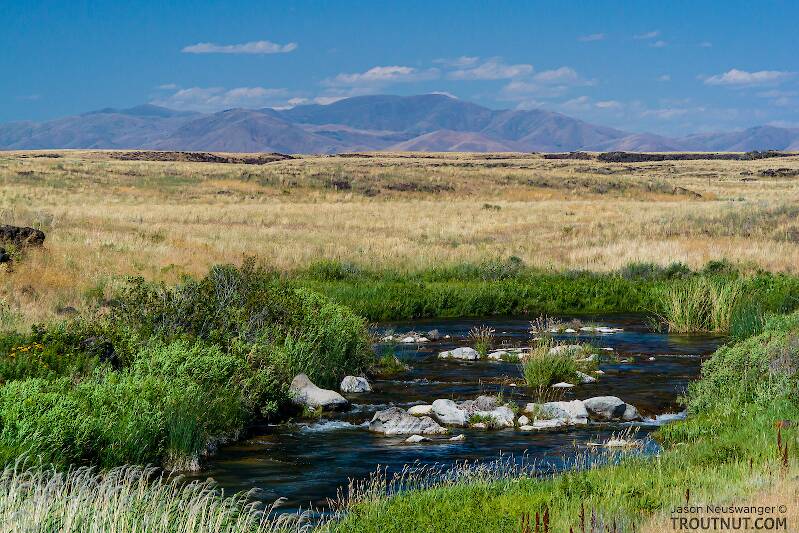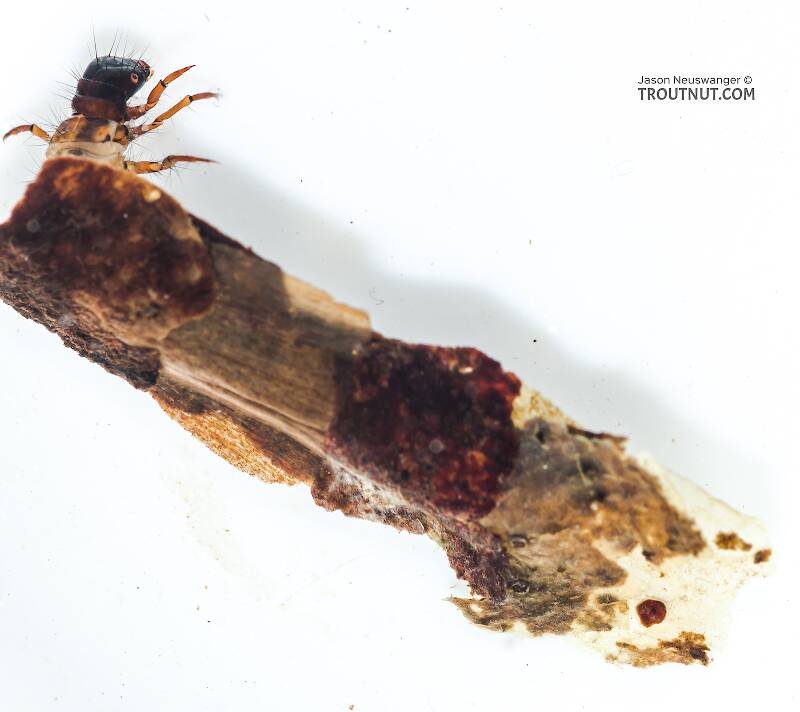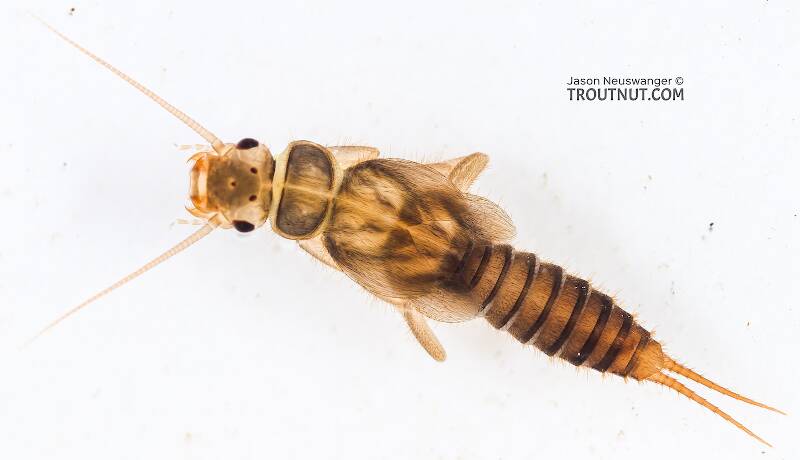
Hex Mayflies
Hexagenia limbata
The famous nocturnal Hex hatch of the Midwest (and a few other lucky locations) stirs to the surface mythically large brown trout that only touch streamers for the rest of the year.
Featured on the forum

This specimen resembled several others of around the same size and perhaps the same species, which were pretty common in my February sample from the upper Yakima. Unfortunately, I misplaced the specimen before I could get it under a microscope for a definitive ID.

Troutnut is a project started in 2003 by salmonid ecologist Jason "Troutnut" Neuswanger to help anglers and
fly tyers unabashedly embrace the entomological side of the sport. Learn more about Troutnut or
support the project for an enhanced experience here.
Landscape & scenery photos from the Icicle River

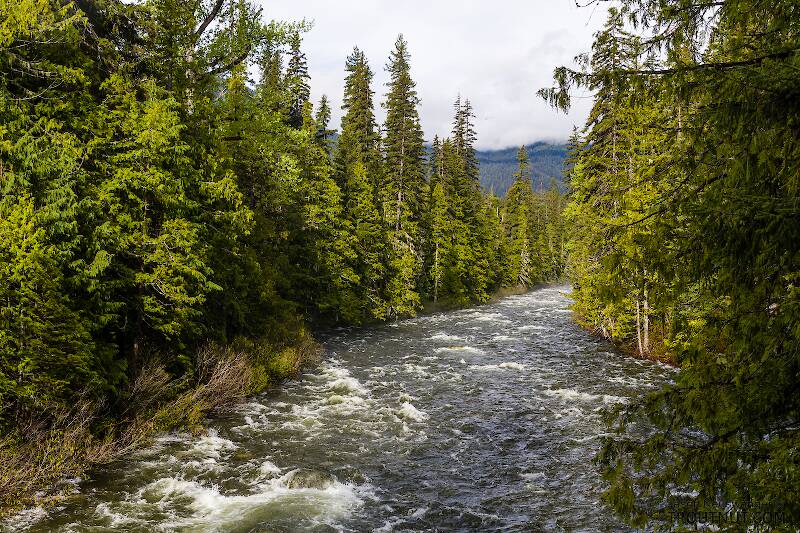
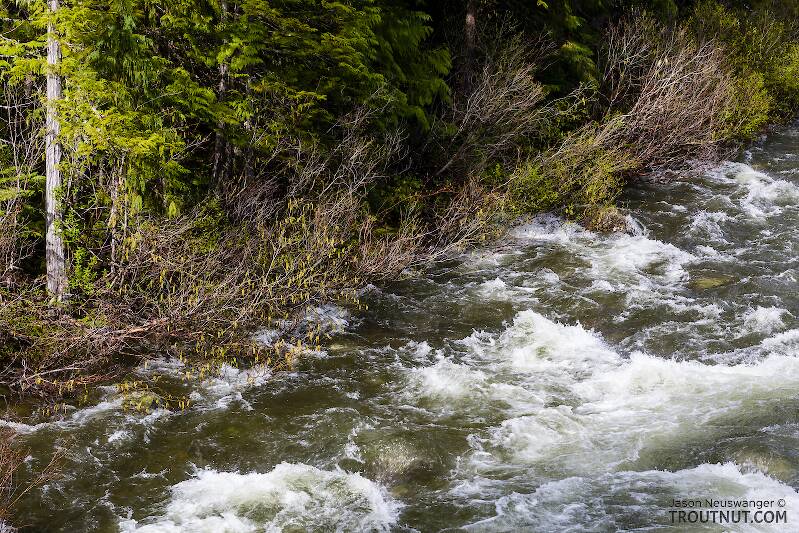
Closeup insects by Troutnut from the Icicle River in Washington
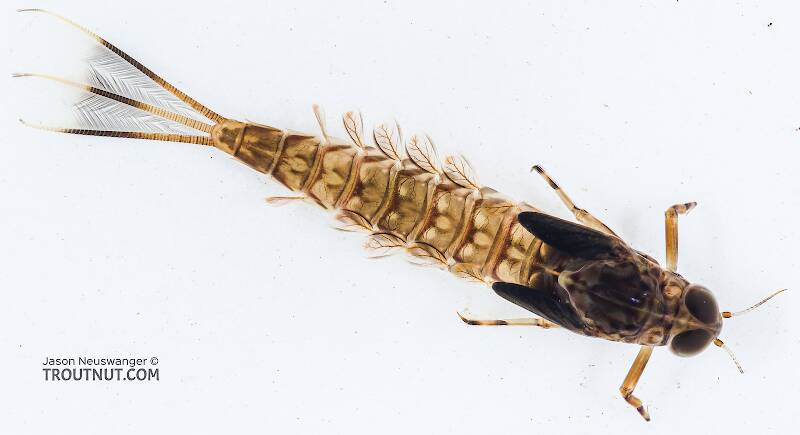
Keying this one out using Zloty & Pritchard 1997:
-No ganglionic markings on sternites 2–8
-Posterior margins of sternits 6–8 without numerous spines
-Mesal gill extension well developed (I really don't like the "well developed" language when it's subjective, but in this case the other option doesn't lead anywhere productive)
-Tails pale in basal 1/3
-Larger species (13–16 mm) — this one is just shy of 12 mm, but closer to 13 than to <10
-Spring emergence
This all points to Ameletus vernalis.
-No ganglionic markings on sternites 2–8
-Posterior margins of sternits 6–8 without numerous spines
-Mesal gill extension well developed (I really don't like the "well developed" language when it's subjective, but in this case the other option doesn't lead anywhere productive)
-Tails pale in basal 1/3
-Larger species (13–16 mm) — this one is just shy of 12 mm, but closer to 13 than to <10
-Spring emergence
This all points to Ameletus vernalis.

